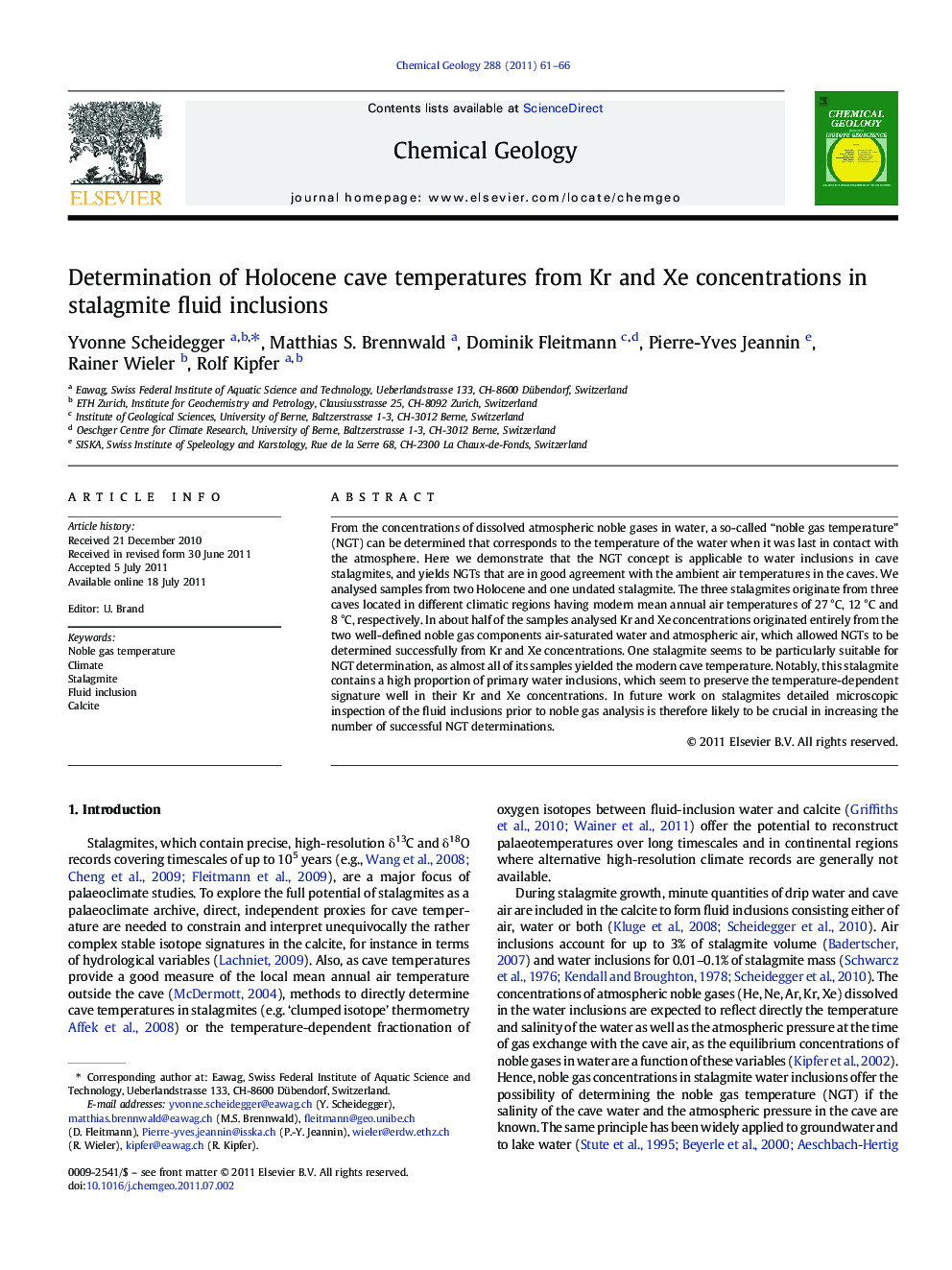| Article ID | Journal | Published Year | Pages | File Type |
|---|---|---|---|---|
| 4699694 | Chemical Geology | 2011 | 6 Pages |
From the concentrations of dissolved atmospheric noble gases in water, a so-called “noble gas temperature” (NGT) can be determined that corresponds to the temperature of the water when it was last in contact with the atmosphere. Here we demonstrate that the NGT concept is applicable to water inclusions in cave stalagmites, and yields NGTs that are in good agreement with the ambient air temperatures in the caves. We analysed samples from two Holocene and one undated stalagmite. The three stalagmites originate from three caves located in different climatic regions having modern mean annual air temperatures of 27 °C, 12 °C and 8 °C, respectively. In about half of the samples analysed Kr and Xe concentrations originated entirely from the two well-defined noble gas components air-saturated water and atmospheric air, which allowed NGTs to be determined successfully from Kr and Xe concentrations. One stalagmite seems to be particularly suitable for NGT determination, as almost all of its samples yielded the modern cave temperature. Notably, this stalagmite contains a high proportion of primary water inclusions, which seem to preserve the temperature-dependent signature well in their Kr and Xe concentrations. In future work on stalagmites detailed microscopic inspection of the fluid inclusions prior to noble gas analysis is therefore likely to be crucial in increasing the number of successful NGT determinations.
► We successfully determine “noble gas temperatures” in fluid inclusions in stalagmites. ► Noble gas temperatures in Holocene samples agree well with modern cave temperatures. ► The calcite structure of a stalagmite is crucial for noble gas temperature determination.
